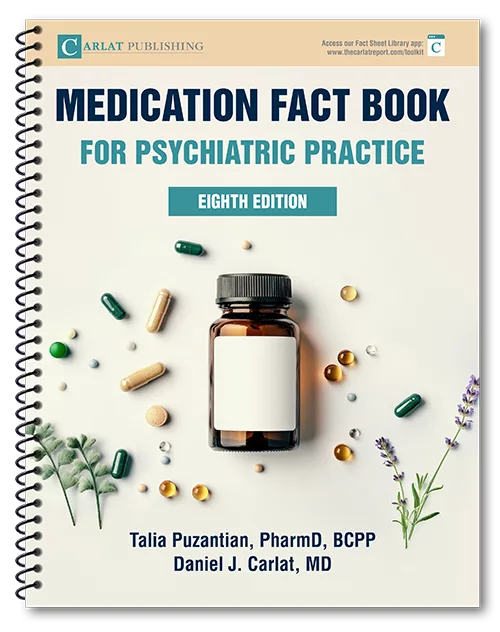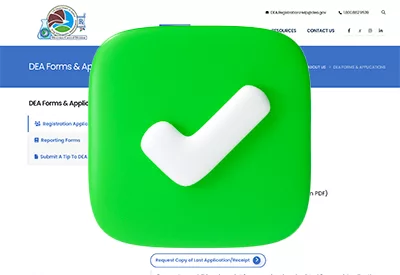Novel Treatment Options for OCD
Ever since the approval of clomipramine in 1989, pharmacotherapy for obsessive-compulsive disorder (OCD) has revolved around selective serotonin reuptake inhibitors (SSRIs). Their benefits, however, are not as impressive as we’d like (Fineberg NA et al, Int Clin Psychopharmacol 2018;33(6):334–348). Recently, treatments with novel mechanisms have found success in clinical trials, including ondansetron, deep transcranial magnetic stimulation (dTMS), and aripiprazole. In this article, I’ll look at where these off-label treatments fit in practice.
Start with serotonergic medications
SSRIs are first-line medications for OCD, but they require higher doses and longer durations than they do for depression. Titrate to the target dose in the table “Serotonergic Medications for OCD” and then allow four to six weeks for a response. If there is no response, raise to the maximum dose for another two to four weeks.

If the patient has not reached a meaningful level of recovery after eight to 12 weeks at the maximum dose of an SSRI, consider clomipramine. This highly serotonergic tricyclic has a slightly higher effect size in OCD than the SSRIs. Obsessions may persist during recovery, but they recede to the back of the mind and the patient is typically able to move past them.
Clomipramine is fairly well tolerated, but it brings new risks such as seizures and delays in cardiac conduction, especially when taken in high doses. Most SSRIs raise clomipramine levels, so taper off the SSRI first or titrate clomipramine slowly if you choose to cross-taper the drugs—citalopram and escitalopram are exceptions (see the table).
When serotonergics fail
Several augmentation options are available for patients who don’t respond to a full trial of an SSRI and clomipramine. A recent analysis identified 19 treatments with at least two placebo-controlled trials in SSRI-resistant OCD, concluding that ondansetron, aripiprazole, dTMS, and cognitive behavioral therapy (CBT) were the most effective (Suhas S et al, World J Bio Psych 2023;24(2):162–177). I’ll walk through those and other options here, starting with the best tolerated of the bunch: ondansetron.
Ondansetron
This repurposed nausea medication is possibly the most effective add-on for OCD. It modulates two neurotransmitter systems involved in OCD: serotonin and dopamine. Furthermore, it’s well tolerated, an important feature in this disorder where obsessional thinking often magnifies adverse effects. Ondansetron’s main side effect is constipation, although QT prolongation is also a risk. Although we’re only discussing augmentation in this review, there are reports of monotherapy with ondansetron for OCD, which could make it a better option for patients with bipolar disorders and OCD (Naguy A et al, CNS Spectr 2022;27(5):553–554).
Antipsychotic augmentation is a popular strategy in many disorders, but it is not as effective in OCD as often imagined. The effect sizes are on the small side, and in rare cases antipsychotics can exacerbate OCD, particularly olanzapine and clozapine (see TCPR, October 2021). Among the options, aripiprazole is a good place to start. It is on the more favorable side for tolerability and was superior to quetiapine in a head-to-head comparison (Talaei A et al, Can J Physiol Pharmacol 2020;98:236–242). In most studies, the antipsychotic was added to an SSRI, but in a few trials it was used as monotherapy, particularly in bipolar disorder (see Sidebar)..
Anticonvulsants
Topiramate and lamotrigine offer an alternative mechanism of action through their glutamatergic effects. The research here is limited, with two small controlled trials supporting topiramate and one supporting lamotrigine, both as augmentation in treatment-resistant cases (Suhas et al, 2023).
Adamantanes
Memantine and amantadine are classified as “adamantanes” based on their shared chemical structure. They modulate two neurotransmitter systems that are implicated in OCD: glutamate and dopamine. Memantine improved OCD in five out of six small, randomized controlled trials, where it worked within eight weeks. Amantadine augmentation has only one small randomized trial supporting its efficacy in OCD. Both are relatively well tolerated, although psychotic symptoms are a risk with amantadine (Modarresi A et al, Psychiatry Res 2019;282:112602).
Brain stimulation devices, like any medical device, are cleared by the FDA for the specific device, not the general concept. So, most TMS devices are not cleared for OCD—only the Brainsway H-7 coil has the green light from the FDA (Tendler A et al, Brain Stimul 2021;14(3):658–661). The H-7 coil is an unusual-looking device that sits on the patient’s head, much like the hair dryer that sat on my mother’s head at the beauty salon. As an option for OCD, dTMS is superior to “regular” TMS.
The Brainsway H-7 coil can generate a signal that reaches deeper into the brain than regular TMS, aiming for the cingulate cortex, which likely explains its superior outcomes. In general, most patients require 30 daily sessions to achieve a response but 10–15 additional sessions to reach remission, depending on the baseline severity. The benefits typically last at least one year. The major problem with dTMS is the limited number of devices available. The company estimates there are about 400 units in the US, most of which are clustered around big cities or academic centers.
Studies find that inducing obsessive thoughts just before stimulation enhances outcomes. Patients meet with a therapist to devise an exposure scenario to use during treatment. For example, someone with a germ phobia might agree to place a dirty rag on their hands while they receive dTMS, pairing the symptom with the brain stimulation.
CBT
The type of CBT that treats OCD is intensive, involving regular exposure exercises where the patient engages with obsessional triggers (eg, a dirty tissue) and resists compulsions (eg, hand washing) until their anxiety recedes on its own, which is a slow process that can take up to 90 minutes (Mathews C, Continuum (Minneap Minn) 2021;27(6):1764–1784). When this exposure-response prevention CBT is available and the patient is willing, therapy can bring impressive results and have more lasting effects than medications (see the table “Augmentation in OCD”).
CARLAT VERDICT
dTMS and CBT have the best evidence in treatment-resistant OCD, but these therapies are not available in all communities. Among the augmentation strategies, ondansetron is a good place to start.




_-The-Breakthrough-Antipsychotic-That-Could-Change-Everything.webp?t=1729528747)



